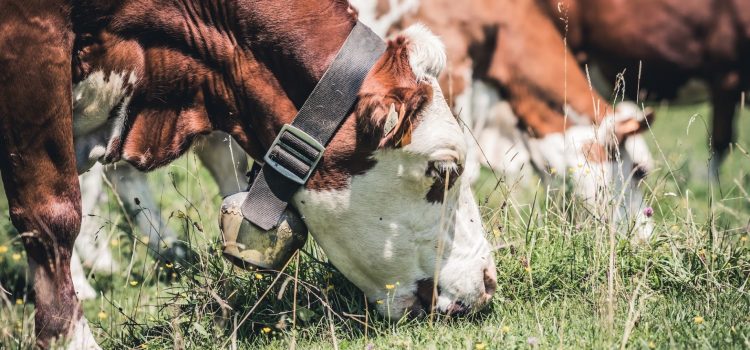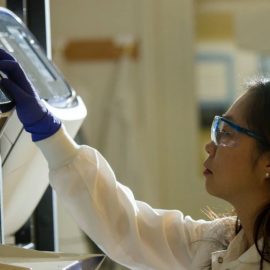

This article is an excerpt from the Shortform book guide to "I Contain Multitudes" by Ed Yong. Shortform has the world's best summaries and analyses of books you should be reading.
Like this article? Sign up for a free trial here.
Looking for examples of symbiosis in animals? How do microbes and animals co-exist? What kinds of symbiotic relationships do they have?
Ed Yong argues that not only are microbes ubiquitous, but they’re also integral to animal bodies. In his book I Contain Multitudes, he explains how symbiosis in animals and microbes functions to shape animals’ development and form long-term interdependent relationships.
Read on for some examples of symbiosis in animals and microbes, based on Yong’s book.
Symbiosis in Animals & Microbes
While microbes help shape animals fundamentally, they also influence animal life through long-term interdependent relationships. According to science writer Ed Yong, this kind of long-term symbiosis in animals and microbes, where both partners gain a mutual benefit, represents a more conventional type of symbiotic relationship, including food symbiosis and co-management of the immune system.
In this article, we’ll explore some examples of symbiosis in animals and microbes, based on the examples in Yong’s book I Contain Multitudes.
(Shortform note: In The Plant Paradox, Gundry also describes the interdependence between people and microbes, but he focuses on a diet-based strategy to foster beneficial microbes using his Plant Paradox Program. The PPP includes three main phases: a three-day cleanse, adjusting your diet (by eating fewer high-sugar foods, for example), and reducing your consumption of animal protein and beginning a form of fasting.)
Food Symbiosis
Yong explains that microbes enter into food symbiosis with animals by evolving ways to expand the animal’s food options. Animals benefit from increased food access, and the microbes ensure the survival of animal hosts that provide food, habitat, and future generations of hosts. Microbes increase animals’ access to food by enabling some animals to survive off sap and toxins, enabling others to digest cellulose, and allowing humans to eat a diverse diet.
(Shortform note: Robin Wall Kimmerer’s Braiding Sweetgrass discusses this concept of food symbiosis in the context of plants and humans. Within the plant world, she describes how the different feeding strategies of fungi and algae enable lichens (composite organisms of fungi and algae) to get the nutrients that neither can get alone. Kimmerer also frames food symbiosis between plants and humans as a form of cyclical gift-giving. For example, when humans get nutritious food from a coconut tree, they might return the gift by spreading its seeds and cultivating more trees. Yong might argue that microbes are another component of this symbiotic gift cycle because of the soil nutrients and digestive abilities they provide.)
Microbes Help Animals Eat Sap and Toxins
Throughout the animal kingdom, bacteria enable some animals to eat things they couldn’t eat on their own, like plant sap and toxins. In many cases, this symbiosis in animals and bacterial microbes produces essential nutrients that are missing in sap, as a kind of dietary supplement. In other cases, the bacteria break down toxic substances for the animal. Reindeer, koalas, woodrats, and many more animals co-evolved with specialized bacteria that allow them to take advantage of a niche (generally toxic) food source.
(Shortform note: Bacteria can also reduce toxicity in foods that humans eat. For example, during fermentation, a lactic acid bacteria reduces the naturally occurring cyanide (present in varying amounts, depending on the variety) in cassava root, a staple food of Africa and South America.)
For example, the caffeine in coffee beans (which are really the seeds of the plant) is toxic to most insects and protects coffee plants from pests. However, a caffeine-eating bacteria allows one insect, the coffee berry borer, to subsist solely on coffee beans. (Shortform note: The coffee plant also has lower doses of caffeine in the nectar of its flowers, which creates a different symbiotic connection between the plant and insects. At these smaller doses, the caffeine is non-toxic to insects and gives them an energetic buzz, encouraging insects to pollinate the coffee plant.)
Microbes Allow Animals to Eat Cellulose
Microbes also established food symbiosis in animals by enabling animals to digest plant cellulose (a structural part of plant cells that humans can’t digest). Yong argues that this helped revolutionize life on Earth because it ultimately enabled humans to adopt agriculture based on domesticated livestock. Bacteria formed a symbiotic relationship with grazing animals like goats and cows, which can eat grasses and other vegetation, and humans then began raising the grazers as food.
(Shortform note: In Sapiens, Yuval Noah Harari notes that the shift to an agricultural food system focused on wheat (prior to the use of domesticated animals) wasn’t exactly an improvement for human communities. The first farmers spent more time working to produce food than they did as hunter-gatherers, and their diet was less nutritious due to the lack of variety. Later, the domestication of livestock reduced the burden of labor for farmers (because of draft animals) and added variety to their diet.)

———End of Preview———
Like what you just read? Read the rest of the world's best book summary and analysis of Ed Yong's "I Contain Multitudes" at Shortform.
Here's what you'll find in our full I Contain Multitudes summary:
- A deep dive into the mysterious and fascinating world of microbes
- How commercial probiotics have oversold health benefits
- How modern sanitation practices are harming us






